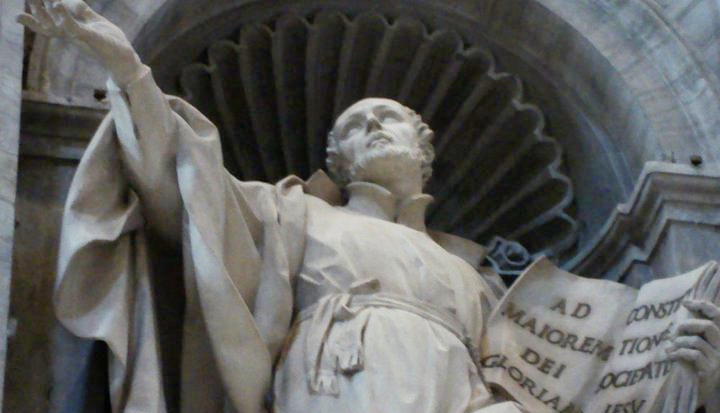A trip to the more conspiratorially minded corners of the Internet will probably yield some dire forecasts about the election of the church’s first Jesuit pope. Thanks to over four centuries the Jesuits’ global presence, the order has been the subject of speculative adventure stories which all have the same underlying theme: the prime directive of the Society of Jesus is to preserve the power, wealth, and prestige of the Society of Jesus. Some of the greatest hits include:
They are headed by the Black Pope, who influences and controls the real pope.
The Jesuits are headed by a general. On formal occasions he wears a black cassock similar to the pope’s white cassock. The rest of the time, he usually wears a clerical collared shirt and slacks. Like just about every other priest you know.
The Jesuits are all secretly Jews.
This nugget of anti-Semitism stems from the fact that several of the first members of the Society of Jesus in Spain descended from Jewish families forced to convert to Catholicism during the reign of Ferdinand and Isabella. But the modern Jesuits? Definitely not Jewish.
The Jesuits will kill you.
Jesuits were implicated in the Gunpowder Plot to blow up James I of England, as well as the assassinations of Henry III and Henry IV of France. More frightening than swords and explosions were the exotic poisons the Jesuits were reputedly slipping into the chocolates they imported from their American missions. To find proof of their deliciously murderous ways, critics needed to look no further than the fact that 17th-century French Jesuits concluded drinking chocolate did not constitute breaking a fast.
The Jesuits are all liberals.
The phrase the early Jesuits used over and over again to describe their work was “the care of souls.” Since everyone has a soul, everyone could potentially come under their care. Jesuits worked in hospices and taught religion. They also advised kings and engaged in complex theological debates. After 473 years of the care of souls, Jesuits have found themselves on every side of every issue they’ve encountered. Can their work easily be grouped together on one side of our modern liberal/conservative dichotomy? Not likely, because as a professor at a Jesuit college once told me, “If you’ve met one Jesuit … you’ve met one Jesuit.”
The Jesuits are all conservatives.
See above.
The Jesuits can’t field a basketball team capable of surviving the Sweet Sixteen.
This one is actually–and so often heartbreakingly–true.
If there is still a need to see something more than a historical curiosity in the election of the first Jesuit pope, consider this: During the conclave, the cardinals stayed in a guesthouse at the Vatican called the Casa Santa Marta. In the 16th century, the Jesuits opened a Casa Santa Marta of their own in Rome. This Santa Marta, however, served a decidedly different clientele: repentant prostitutes. The order even provoked the ire of one 16th-century curia official when his mistress left him to live at Santa Marta.
Caring for souls and shaking up the curial status quo are nothing new for the Jesuits, and Pope Francis will have plenty of inspiration for how to accomplish these tasks.
Statue of St. Ignatius of Loyola in St. Peter's Basilica; Photo by Caitlyn Schmid









